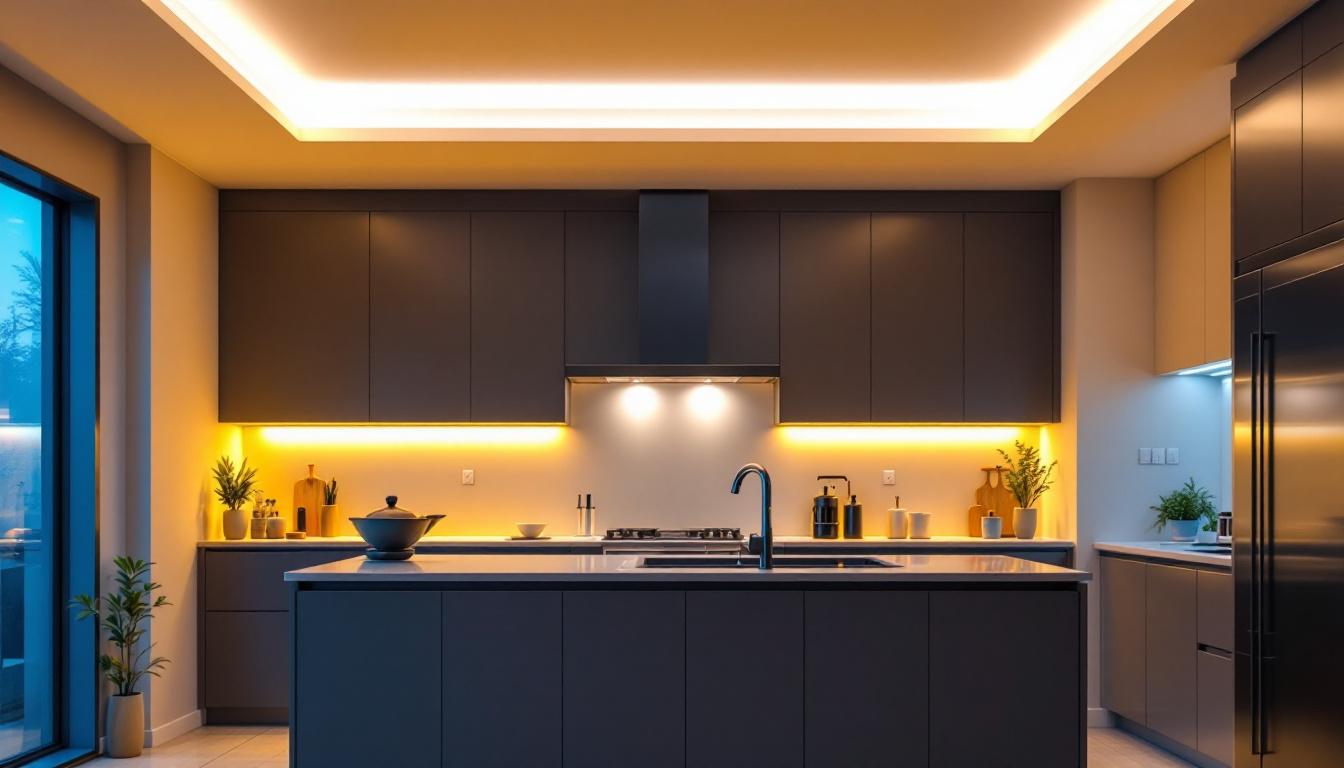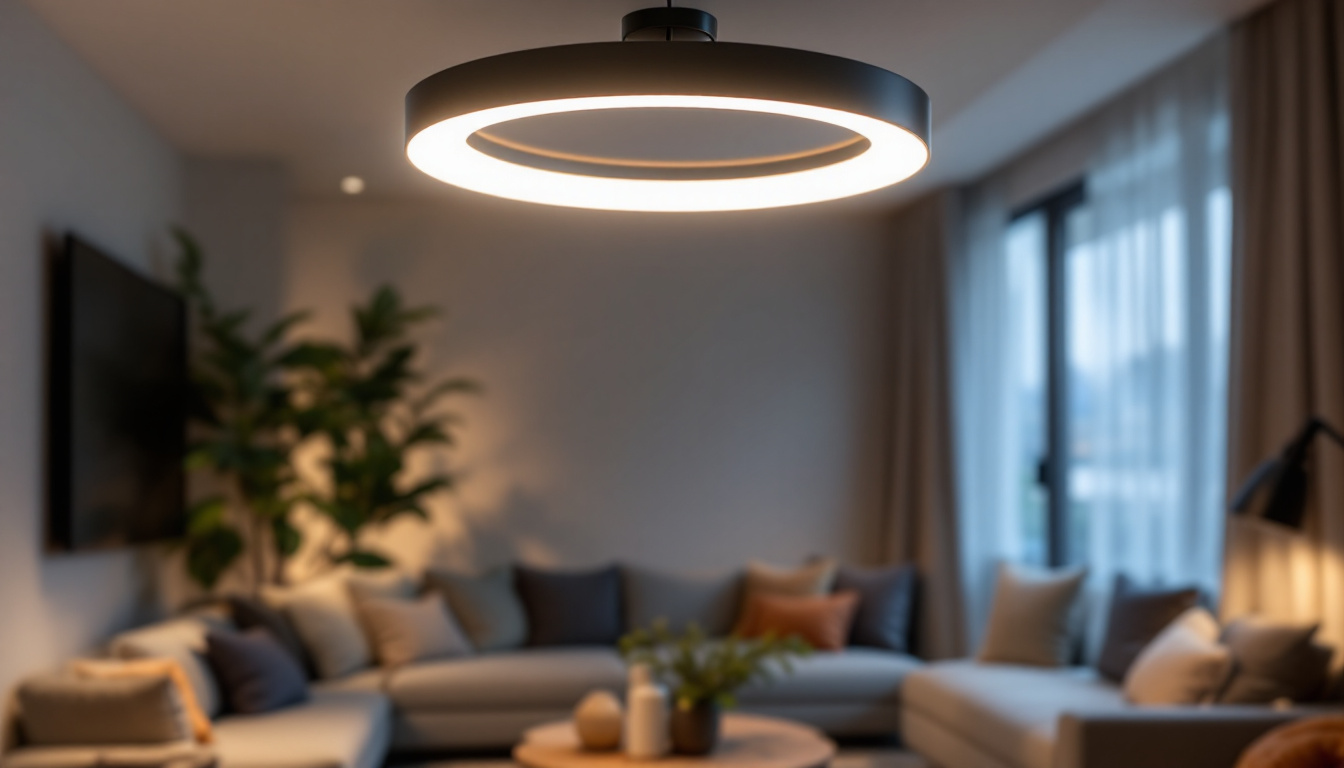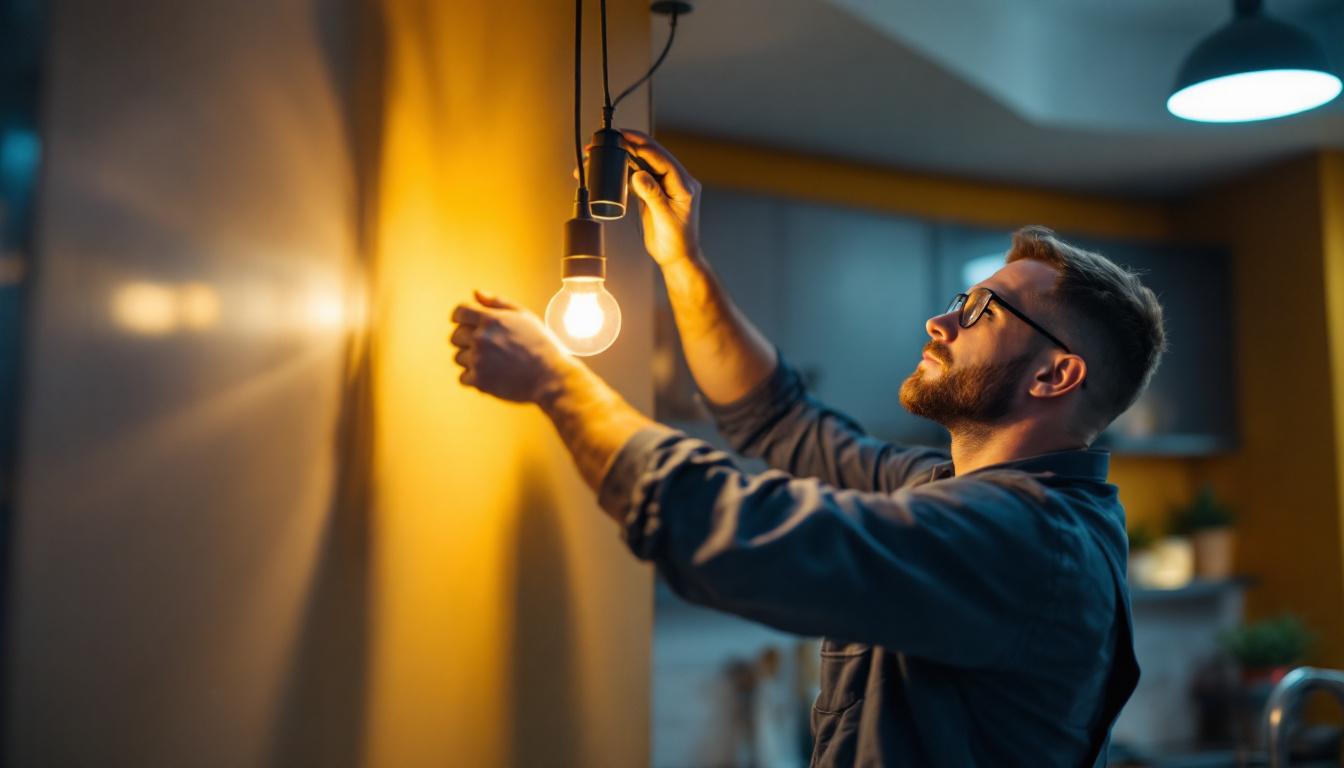
In the competitive world of lighting design and installation, staying ahead of the curve is crucial for lighting contractors. One of the most significant trends in residential and commercial spaces is the shift toward LED lighting, particularly in kitchens. This guide will explore how ceiling LED kitchen lighting can not only enhance the aesthetic appeal of a space but also significantly boost profits for lighting contractors.
The kitchen is often considered the heart of the home, serving as a space for cooking, dining, and socializing. As such, effective lighting is essential for both functionality and ambiance. Proper lighting can transform a kitchen, making it more inviting and efficient.
Good lighting in the kitchen is not just about aesthetics; it plays a vital role in ensuring safety and functionality. Bright, well-distributed light helps prevent accidents while cooking, such as cutting injuries or spills. Additionally, it allows homeowners to perform tasks like chopping, mixing, and cleaning with ease. For instance, under-cabinet lighting can illuminate countertops, making it easier to see what you’re doing and reducing the risk of mishaps. Furthermore, incorporating dimmable options can provide flexibility, allowing for brighter light during food preparation and softer light during family meals or gatherings.
Beyond functionality, lighting contributes significantly to the overall atmosphere of a kitchen. The right combination of ambient, task, and accent lighting can create a warm and inviting environment. Ceiling LED lights offer versatility in design and placement, allowing for various lighting effects that can enhance the kitchen’s aesthetic appeal. Pendant lights over an island or dining area can serve as striking focal points, while recessed lighting can provide a clean, modern look. Moreover, the use of color temperature in lighting can influence mood; warmer tones can create a cozy feel, while cooler tones can promote alertness and focus, making it essential to choose wisely based on the kitchen’s intended use and the time of day.
In addition to these practical considerations, the style of lighting fixtures can also reflect personal taste and complement the kitchen’s overall design theme. Whether opting for sleek, contemporary fixtures or rustic, vintage-inspired designs, the choice of lighting can enhance the kitchen’s character. Incorporating smart lighting technology can further elevate the experience, allowing homeowners to adjust brightness and color with a simple voice command or through a smartphone app. This not only adds convenience but also enables the creation of different moods for various occasions, from lively dinner parties to quiet family breakfasts.
LED lighting has surged in popularity due to its numerous advantages over traditional lighting options. Understanding these benefits can help lighting contractors make informed recommendations to clients.
One of the most compelling reasons to choose LED lighting is its energy efficiency. LEDs consume significantly less power than incandescent or fluorescent bulbs, which translates to lower energy bills for homeowners. This energy efficiency is a selling point that contractors can leverage when discussing options with clients.
LED lights have a much longer lifespan compared to traditional bulbs. While incandescent bulbs may last around 1,000 hours, LEDs can last up to 25,000 hours or more. This longevity means fewer replacements and maintenance costs for homeowners, making LED lighting an attractive option for those looking to invest in their kitchens.
As awareness of environmental issues grows, many homeowners are seeking sustainable solutions. LED lights are more eco-friendly, as they contain no harmful materials and are fully recyclable. By promoting LED lighting, contractors can align with the values of environmentally-conscious clients, further boosting their appeal.
When planning ceiling LED lighting for kitchens, several design considerations should be taken into account to ensure optimal functionality and aesthetics.
There are various types of LED fixtures available for kitchen ceilings, each offering unique benefits. Recessed lighting is a popular choice, providing a sleek, modern look while delivering ample illumination. Pendant lights can add a decorative touch and create focal points above islands or dining areas. Additionally, track lighting offers flexibility, allowing homeowners to direct light where needed.
The color temperature of LED lights can significantly impact the kitchen’s ambiance. Warmer tones (around 2700K to 3000K) create a cozy atmosphere, while cooler tones (4000K to 5000K) provide a bright, energizing effect. Contractors should discuss these options with clients to determine the best fit for their kitchen style and personal preferences.
Effective kitchen lighting often involves layering different types of light. Combining ambient, task, and accent lighting can create a well-balanced environment. For instance, recessed lights can serve as ambient lighting, while under-cabinet lights provide task lighting for cooking prep. Accent lighting can highlight architectural features or decorative elements, adding depth to the overall design.
Successful installation of ceiling LED kitchen lighting requires careful planning and execution. Here are some tips to ensure a smooth process.
Before installation, it’s essential to assess the kitchen space thoroughly. Consider the layout, existing electrical systems, and the specific needs of the homeowner. Taking measurements and noting the locations of cabinets, appliances, and workspaces will help in determining the best lighting solutions.
When installing LED fixtures, ensure that the existing wiring can support the new lights. LED lights typically require less wattage, but it’s crucial to check compatibility with dimmer switches and other controls. If necessary, consult with a licensed electrician to address any wiring issues before proceeding with the installation.
After installation, testing the lighting levels is vital. This step allows contractors to make adjustments based on the homeowner’s feedback. Dimmer switches can be particularly beneficial, enabling users to customize the brightness according to their needs and preferences.
To capitalize on the growing demand for LED kitchen lighting, contractors must effectively market their services. Here are some strategies to consider.
Creating a portfolio of previous projects can be an effective marketing tool. High-quality images of completed kitchen lighting installations can demonstrate expertise and inspire potential clients. Consider using social media platforms to share these images and engage with a broader audience.
Providing educational content about the benefits of LED lighting can help clients make informed decisions. Consider creating blog posts, videos, or brochures that explain the advantages of LED lighting, design tips, and installation processes. This approach not only positions contractors as experts but also builds trust with potential clients.
Establishing relationships with kitchen designers, contractors, and real estate agents can lead to valuable referrals. Attend local home improvement shows and industry events to connect with other professionals. Building a network can significantly enhance visibility and credibility in the market.
As with any lighting solution, potential clients may have concerns regarding LED kitchen lighting. Addressing these concerns proactively can help build confidence in the product and the contractor’s services.
One common concern among homeowners is the initial cost of LED fixtures compared to traditional lighting options. While LEDs may have a higher upfront price, it’s essential to emphasize the long-term savings on energy bills and replacement costs. Providing a cost-benefit analysis can help clients see the value in their investment.
Some clients may worry that LED lighting may not provide the same quality of light as traditional bulbs. Highlighting advancements in LED technology, such as improved color rendering and adjustable color temperatures, can help alleviate these concerns. Offering demonstrations or samples can also showcase the superior quality of modern LED lighting.
Clients may be concerned about how new LED fixtures will integrate with their existing lighting systems. Providing clear information about compatibility and installation processes can help ease these worries. Offering solutions for retrofitting existing fixtures can also be a selling point for contractors.
As technology continues to evolve, the future of kitchen lighting is likely to change as well. Staying informed about upcoming trends can help contractors remain competitive.
The rise of smart home technology is influencing kitchen lighting design. Smart LED bulbs and fixtures can be controlled via smartphones or voice-activated devices, allowing homeowners to adjust lighting levels and colors with ease. Contractors should consider incorporating smart lighting solutions into their offerings to meet the demands of tech-savvy clients.
As sustainability becomes increasingly important, contractors may need to explore eco-friendly lighting options beyond just LEDs. This could include solar-powered lighting solutions or fixtures made from sustainable materials. Emphasizing a commitment to sustainability can attract environmentally-conscious clients.
Homeowners are increasingly looking for personalized solutions that reflect their unique styles. Offering customizable lighting designs, such as adjustable fixtures or tailored color schemes, can set contractors apart in a crowded market. Collaborating with clients to create bespoke lighting solutions can enhance satisfaction and lead to repeat business.
Ceiling LED kitchen lighting presents a wealth of opportunities for lighting contractors. By understanding the importance of kitchen lighting, the benefits of LEDs, and the latest design trends, contractors can effectively meet client needs while boosting their profits. Through careful planning, effective marketing, and a commitment to quality, lighting contractors can thrive in this evolving industry.
As the demand for energy-efficient and aesthetically pleasing lighting solutions continues to grow, embracing LED technology in kitchen design will not only enhance the appeal of spaces but also solidify a contractor’s reputation as a leader in the lighting industry.
Ready to elevate your lighting projects and boost your profits with the latest in ceiling LED kitchen lighting? Look no further than LumenWholesale, where we provide contractors with superior, spec-grade lighting products at the most competitive wholesale prices. Say goodbye to local distributor markups and hello to a vast selection of industry-standard lighting that promises reliability and high performance for every kitchen space. With the convenience of bulk buying, free shipping, and no hidden fees, LumenWholesale is your go-to source for quality and affordability. Discover wholesale lighting at the best value and make your next installation a shining success.

Discover expert insights from leading lighting contractors on the effective use of temporary lighting stringers.

Explore the fascinating journey of can light bulbs and their transformative impact on the lighting industry.

Illuminate your space with style by exploring the world of modern ceiling lights.

Discover the secrets of light fixture tubing with insights from expert lighting contractors.